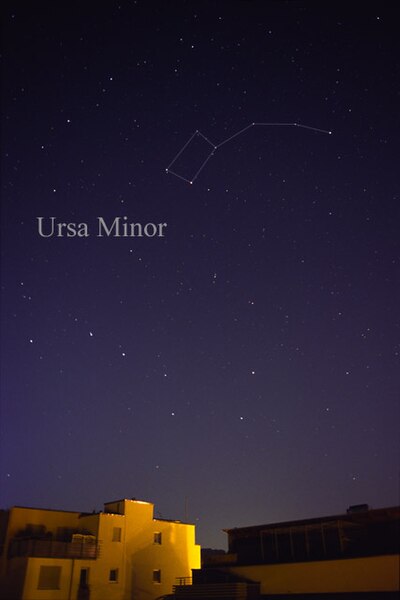Polaris is a star in the northern circumpolar constellation of Ursa Minor. It is designated α Ursae Minoris and is commonly called the North Star or Pole Star. With an apparent magnitude that fluctuates around 1.98, it is the brightest star in the constellation and is readily visible to the naked eye at night. The position of the star lies less than 1° away from the north celestial pole, making it the current northern pole star. The stable position of the star in the Northern Sky makes it useful for navigation.
Polaris components as seen by the Hubble Space Telescope
Polaris and its surrounding integrated flux nebula
A typical Northern Hemisphere star trail with Polaris in the center.
This artist's concept shows: supergiant Polaris Aa, dwarf Polaris Ab, and the distant dwarf companion Polaris B.
Ursa Minor, also known as the Little Bear, is a constellation located in the far northern sky. As with the Great Bear, the tail of the Little Bear may also be seen as the handle of a ladle, hence the North American name, Little Dipper: seven stars with four in its bowl like its partner the Big Dipper. Ursa Minor was one of the 48 constellations listed by the 2nd-century astronomer Ptolemy, and remains one of the 88 modern constellations. Ursa Minor has traditionally been important for navigation, particularly by mariners, because of Polaris being the north pole star.
Ursa Minor as depicted in the The Book of Fixed Stars, ca. 1009-1010
The constellation Ursa Minor as it can be seen by the naked eye (with connections and label added). Notice the seven stars of Ursa Major that form the Big Dipper and then make a line from the outermost Big Dipper stars (sometimes called the "pointers") to Polaris.
Ursa Minor and Ursa Major in relation to Polaris
NGC 6217








